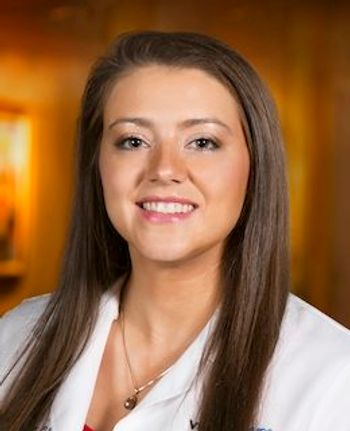
Clinical trial Q&A: New data on DOT lenses show strong global performance in myopia control
New data from North American and Chinese clinical trials reinforce the safety, efficacy, and durability of DOT lenses in slowing pediatric myopia progression, without evidence of rebound.
At this year’s ARVO annual meeting, 2 posters presenting data initiated by SightGlass highlighted the growing body of clinical evidence supporting the use of
In the following Q&A, Laughton discusses the methodologies, clinical relevance, and broader implications of these studies, offering valuable guidance for optometrists already managing pediatric myopia, as well as those considering expanding their scope of care in response to rising global prevalence.
For those who weren’t able to attend ARVO this year, can you detail the parameters and methods of the research featured in this poster?
Poster #1: CYPRESS, our pivotal 4-year multicenter clinical trial, demonstrated DOT lenses are safe and effective at slowing the progression of myopia in a population of North American children. Children enrolled in CYPRESS were invited to join a follow-up study, BIRCH, to evaluate whether there is an acceleration of myopia progression or ‘rebound effect’ following the cessation of DOT lens treatment. Twelve months after ceasing treatment, refraction and axial length reverted to age-normative rates, indicating no significant rebound effect.
Poster #2: To evaluate the safety and efficacy of DOT spectacle lenses in a Chinese population, where the prevalence and severity of myopia is even greater, a new study was initiated at 5 sites in China. The first 12-month results were presented at ARVO and demonstrated excellent safety and efficacy of DOT lenses, slowing myopia progression by 75%.
How did the actual performance of the DOT lenses compare to your expectations?
DOT lenses performed as expected, significantly slowing myopia progression and demonstrating no evidence of rebound effect once treatment was stopped.
This study took place in China. What does this mean for eye care providers in the US? How does this build upon Cypress?
The first-year results from our study in China support the outcomes from the North American (CYPRESS) clinical trial. Eye care providers can feel confident that DOT lenses effectively slow myopia progression in children from diverse racial and ethnic backgrounds, demonstrating consistent results across both Asian and North American populations.
What are the next steps in this research?
We have presented the interim results from our study in China, and we will be continuing this study for another 2 years to evaluate longer-term efficacy among Chinese children.
What immediately applicable clinical advice does this research yield, especially for optometrists who practice myopia management? What about doctors who see pediatric patients but don’t offer myopia management?
Based on these results, eye care professionals can feel confident in the performance and lasting impact of DOT lenses to slow myopia progression in their pediatric patients.
What was the response to these findings at the meeting? How do you think this research fits into the broader landscape of clinical research presented at ARVO, especially this session?
Myopia continues to be a hot topic in optometry, and the myopia poster sessions were incredibly busy. There was a lot of interest in the performance of DOT lenses and a clear demand from eye care professionals from the US to have access to spectacle lens myopia management technologies (DOT lenses are for investigational use only in the US). The theme of contrast reduction for myopia control was discussed during several other paper and poster sessions, showing the growing interest in contrast management. An education session led by Professor James Wolffsohn also explored the suggestion that all defocus-based optical interventions may operate via contrast management.
Newsletter
Want more insights like this? Subscribe to Optometry Times and get clinical pearls and practice tips delivered straight to your inbox.


















































.png)


